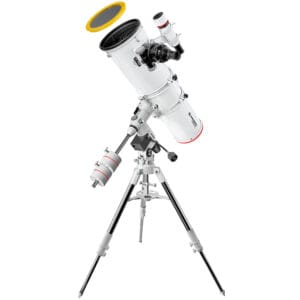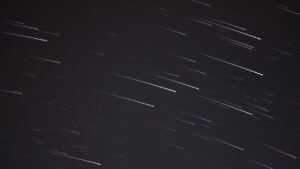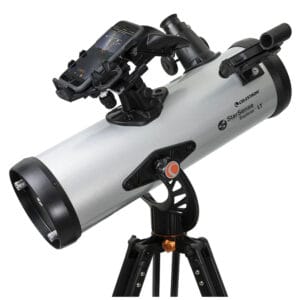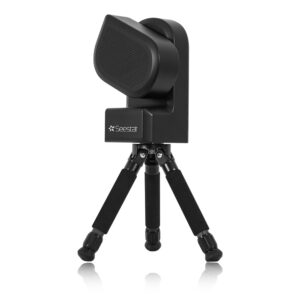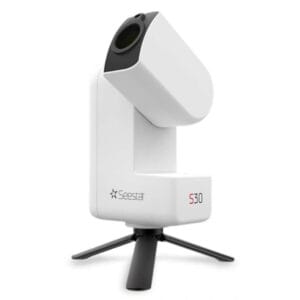Hoeveel planeten zijn er? Die vraag lijkt eenvoudig, maar het antwoord hangt sterk af van hoe je ‘planeet’ definieert. Zeg je acht, negen of duizenden? Het antwoord is zowel wetenschappelijk als cultureel interessant en de discussie over Pluto speelt daar een grote rol in. In deze blog leggen we uit hoeveel planeten er zijn in ons zonnestelsel, welke objecten daar niet meer onder vallen, en hoeveel werelden er inmiddels buiten ons zonnestelsel zijn ontdekt.
Wat is een planeet volgens de wetenschap (officiële definitie)
Volgens de Internationale Astronomische Unie (IAU) zijn er drie voorwaarden waaraan een object moet voldoen om een planeet te zijn:
- Het draait om een ster (zoals onze zon).
- Het heeft genoeg massa om door zwaartekracht een ronde vorm te krijgen.
- Het heeft zijn baan rond de zon schoongeveegd van andere objecten.
Op basis van die definitie telt ons zonnestelsel acht officiële planeten:
- Mercury
- Venus
- Aarde
- Mars
- Jupiter
- Saturn
- Uranus
- Neptune
En Pluto dan?
Tot 2006 werd Pluto gezien als de negende planeet. Het voldoet aan de eerste twee voorwaarden, maar niet aan de derde: Pluto deelt zijn baan met vele andere objecten in de Kuipergordel: een ring van ijzige objecten aan de rand van het zonnestelsel. Daarom werd Pluto hernoemd tot dwergplaneet.
Naast Pluto zijn er nog vier andere objecten die officieel als dwergplaneet erkend zijn:
- Eris
- Haumea
- Makemake
- Ceres (die zich in de asteroïdengordel bevindt)
Hoewel dwergplaneten geen officiële planeten meer zijn, zijn ze nog steeds belangrijk voor ons begrip van de vorming van het zonnestelsel.
Hoeveel planeten zijn er buiten ons zonnestelsel?
De laatste decennia zijn we ver buiten ons eigen zonnestelsel gaan kijken. Dankzij telescopen zoals Kepler, TESS and James Webb zijn er tot nu toe meer dan 5.000 exoplaneten ontdekt. Deze planeten draaien rond andere sterren in onze Melkweg.
Sommige exoplaneten lijken op de aarde, anderen zijn gasreuzen zoals Jupiter, en sommige vallen in categorieën die we hier niet kennen, zoals ‘super-aardes’ of ‘hete Jupiters’.
🔗 Meer over recente ontdekkingen vind je in onze blog over de James Webb Space Telescope
Hoeveel zijn er in totaal?
Astronomen schatten dat onze Melkweg alleen al honderden miljarden planeten bevat. De meeste zijn nog niet ontdekt, maar hun bestaan wordt afgeleid via:
Zwaartekracht-invloeden op andere hemellichamen, transitfotometrie (lichtverzwakking bij doorgang voor een ster) en radiale snelheidsmetingen
Wat zijn dwergplaneten en planetoïden?
Naast de acht planeten en vijf officiële dwergplaneten zijn er duizenden kleinere objecten, zoals planetoïden (asteroïden) en TNO’s (Trans-Neptuniaanse Objecten).
Sommige van deze objecten zijn bijna rond en hadden bij een soepelere definitie mogelijk planeetstatus gekregen. De discussie over Pluto en de planeetdefinitie blijft dus actueel, vooral in educatieve kringen.
Wat kun je zelf zien met een telescoop?
Met een telescoop kun je niet álle planeten waarnemen, maar een aantal wel:
- Jupiter en zijn manen zijn zelfs met een kleine telescoop zichtbaar.
- Saturn toont zijn ringen al vanaf 60x vergroting.
- Mars is rood en herkenbaar, vooral rond oppositie (oppositie is wanneer een planeet het dichtstbij de aarde staat)
- Venus vertoont fases, net als de maan.
- Mercury is lastig, maar soms zichtbaar bij zonsopkomst of -ondergang.
🔗 Meer weten? Bekijk onze gids voor planetenwaarneming
Pluto is te klein en te zwak om met amateurapparatuur te zien helaas… valt hij dus nét weer buiten de boot.
Conclusie: hoeveel planeten zijn er?
De vraag “hoeveel planeten zijn er eigenlijk?” heeft meerdere correcte antwoorden, afhankelijk van je definitie:
| Categorie | Number |
|---|---|
| Officiële planeten | 8 |
| Erkende dwergplaneten | 5 |
| Bevestigde exoplaneten | 5.000+ |
| Verwachte exoplaneten | Honderden miljarden(!) |
Het is duidelijk: ons begrip van planeten is dynamisch. Terwijl we nieuwe technologieën ontwikkelen en verder het heelal in kijken, zullen deze aantallen blijven groeien.
Meer weten over welke telescoop je nodig hebt om planeten te zien? Lees onze keuzegids voor beginners or lees hier een uitgebreide blogpost over planeten in ons zonnestelsel inclusief foto’s.

